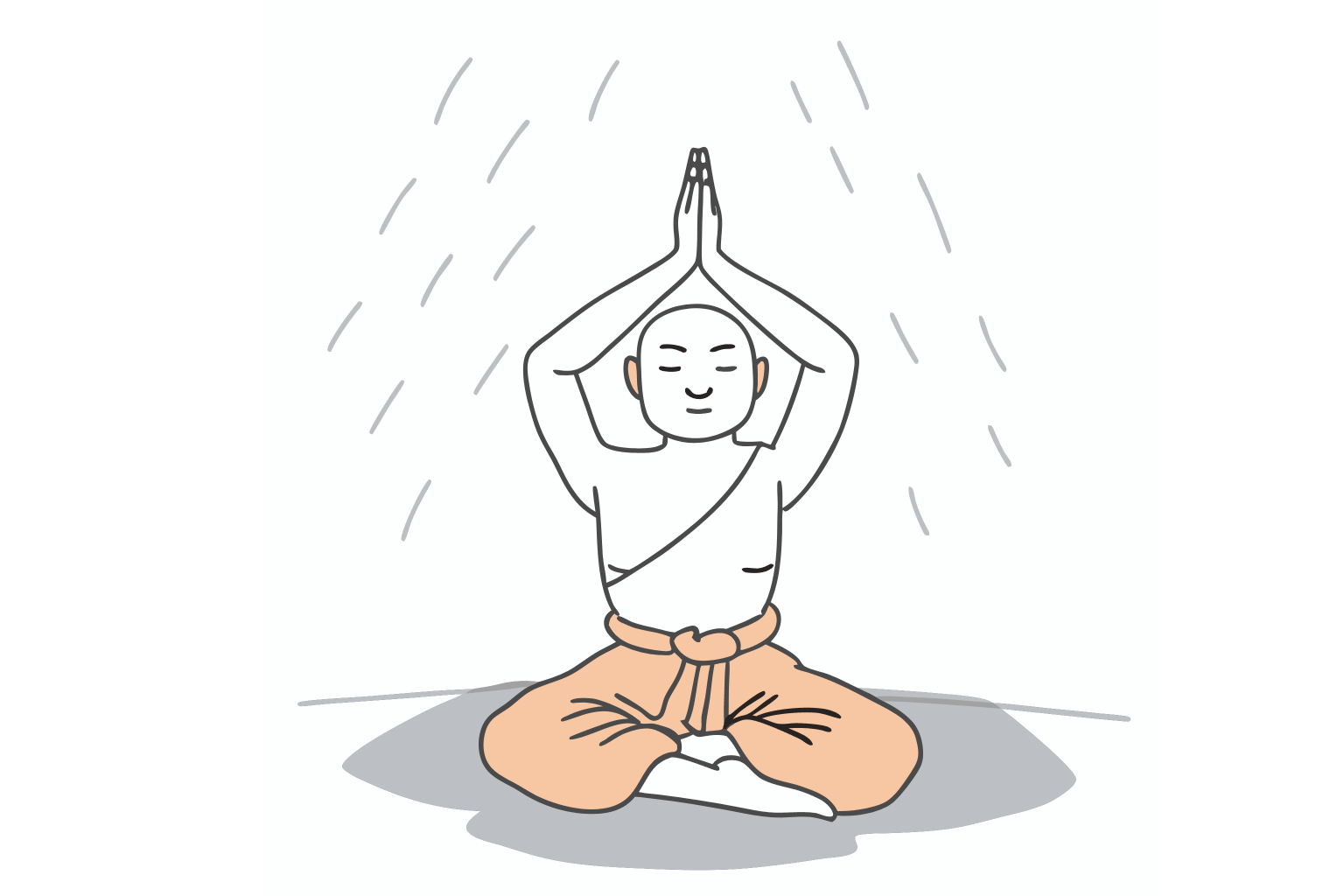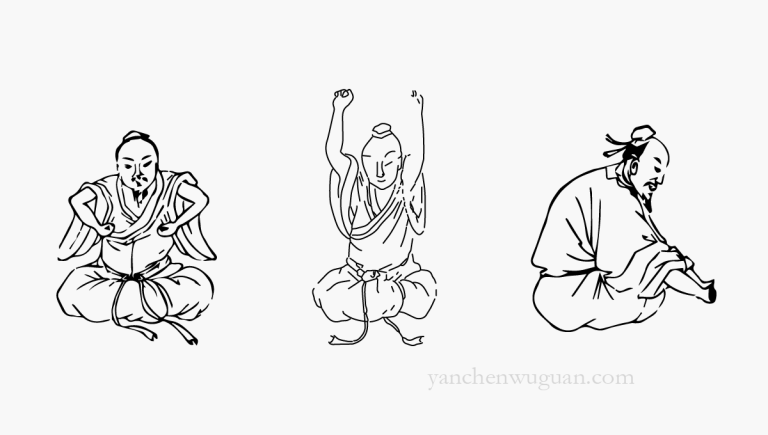唤醒丹田:气功养生的关键

丹田在气功中的重要性: 在健康气功领域, “丹田” 丹田的频繁出现,引出了一个问题:为什么丹田在气功练习中如此重要?如果您曾经读过提倡注重丹田的文献,那么您并不孤单。本文旨在阐明为什么唤醒丹田被认为是强健体魄的关键,也是有效气功训练的基石,从而促进长寿。
丹田:强健体魄的基础
了解丹田
尚未练习健身气功的人可能难以领悟丹田气的真谛。唤醒丹田不仅仅是一个概念,它意味着在练习过程中清晰地感受到真气的持续流动。根据古籍记载 南京, “丹田是人体气运行的地方,位于脐下、两肾之间。”
对于虔诚的修炼者来说,培养丹田真气不仅对身体健康至关重要,也是气功技能提升的基础。古代圣贤曾断言,理解身体控制的框架取决于对丹田功能的认识。
丹田作为能量库
丹田是能量的储存库。 新英桂枝经中说:“气为长生圣药。”唤醒丹田可以让练习者释放体内的能量储备,是气功修炼过程中的一个重要里程碑。
这种能量可以被意识控制和感知,是人体活力的中心枢纽。许多古代文献将激活丹田能量称为“点火”,象征着活力的增强。
丹田:元气的“泵”
丹田力学
丹田就像一个气泵,将气循环至全身。一旦被唤醒,练习者就能感受到丹田的扩张和收缩,如同心脏泵血一样。这种气的节律性运动能够增强整体活力,促进血液有效循环。
丹田是一生的财富
正如所指出的 社省总要“丹田化为生命宝藏,如得千两黄金。”丹田一旦觉醒,能为身体带来不可估量的益处,让练功者获得无限的健康长寿潜能。
唤醒丹田:通往大师的捷径
唤醒丹田的主要益处
唤醒丹田不仅仅是气功训练中的一个步骤,更是掌握全身内气调节的捷径。丹田的开启能够增强对自身气的广度、密度、强度和速度的感知,促进能量的顺畅流动,并在身体、呼吸和精神之间建立和谐的联系。
- 关节灵活性和能量流动:内劲源自丹田,对于伸展关节和促进能量流动至关重要。
- 冥想状态:真正的冥想需要一种放松的状态,只有当气在全身自由流动时才能实现。唤醒丹田有助于这种放松。
- 坚持练习:持续的修炼依赖于丹田作为内在力量的源泉。当练习者唤醒丹田时,他们便会获得源源不断的能量,支持持续的气功修炼。
唤醒丹田的实用技巧
1.呼吸练习
深呼吸是激活丹田最有效的方法之一。练习者可以舒适地躺下或坐着,专注于呼吸。用鼻子深吸一口气,同时观想能量下降到小腹(丹田所在之处),然后用嘴慢慢呼气。这种深腹式呼吸的方法可以让气在丹田中积聚。
2.专注冥想
在冥想状态下,练习者可以将双手放在小腹上,轻轻按压以建立连接。一些观想,例如想象一道温暖的光芒从这个区域扩散开来,有助于唤醒丹田。保持这种专注几分钟,有助于培养强烈的气感。
3. 轻柔的运动练习
将轻柔的动作与有意识的呼吸相结合,可以进一步刺激丹田。太极拳或某些气功等练习强调动作流畅,同时将能量集中在丹田。您可以结合弯曲、扭转或圆周运动等动作来促进内气循环。
4.接地技术
脚踏实地、稳固安稳的感觉对于唤醒丹田至关重要。站立或坐着,双脚稳稳地踏在地面上,能营造出与大地的联结感。观想能量从大地升起,进入双脚,再向上流向丹田,能够促进大地与能量中心之间的平衡交换。
5.情绪释放
情绪会阻碍气的流动。练习一些释放压抑情绪的技巧,例如声音疗法或通过运动表达情绪,可以打开通往丹田的能量通道。允许自己感受和处理情绪,能够更深层次地连接能量,并恢复活力。
唤醒丹田的常见挑战
1. 精神干扰
在唤醒丹田的过程中,思绪飘忽不定是常有的事。练习正念,每当你注意到思绪飘忽不定的时候,就将注意力重新调整到丹田区域的感觉上。
2.身体紧张
身体紧张会阻碍气的运行。定期进行放松技巧,例如渐进式肌肉放松或轻柔的伸展运动,有助于缓解身体紧张,使气更容易进入丹田。
3.不耐烦
唤醒丹田需要时间和持续的投入。如果效果没有立即显现,练习者可能会感到沮丧。请耐心练习,并理解进步可能是循序渐进的。
将丹田觉醒融入日常生活
1. 日常仪式
将以丹田为中心的练习融入你的日常生活。无论是清晨的伸展运动、傍晚的冥想,还是用餐时的呼吸控制练习,都要找机会在一天中保持与丹田的联系。
2. 正念意识
在日常活动中练习正念,可以让你觉察到自己的身体和能量流动。留意你在行走、坐下甚至说话等简单动作中的感受。了解丹田的状态有助于与你的能量中心建立持续的联系。
3.社区实践
参加集体气功或太极拳课程,这些课程通常提供良好的学习环境,方便学习和分享与丹田激活相关的经验。与他人交流可以增强动力,并在练习社群中培养归属感。
Conclusion
唤醒丹田是一段与气功修炼紧密相连的蜕变之旅。通过结合深呼吸练习、专注冥想、轻柔运动练习、接地技巧和情绪释放等特定技巧,练习者可以滋养并唤醒这个重要的能量中心。认识并克服常见的挑战——例如精神干扰、身体紧张和急躁——是这一过程中的关键步骤。此外,通过正念觉知和社区参与,将以丹田为中心的练习融入日常生活,有助于与这个能量中心建立持续的联系。
通过掌握这些技巧并在练习中培养耐心,您可以驾驭丹田的力量,从而拥有充满活力、平衡感十足的生活,并与存在的各个层面建立更深层次的联系。这种整体方法不仅能为您的气功之旅奠定坚实的基础,还能开启持久的益处之门,让您以韧性与和谐驾驭人生。
如果您有任何想要改进或关注的特定领域,请告诉我们!




